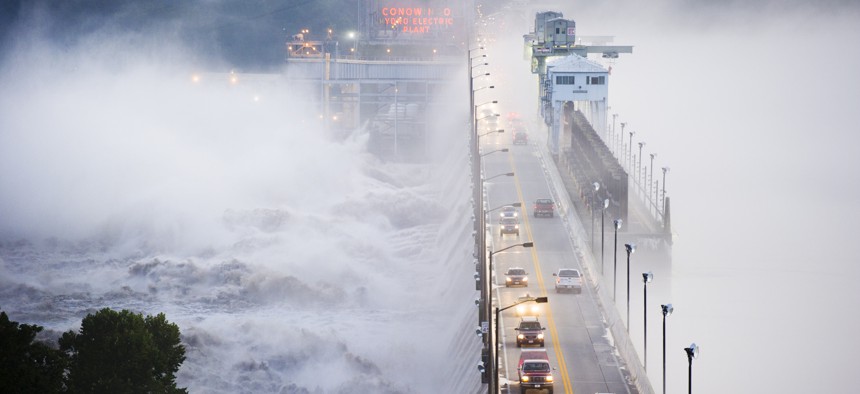Maryland to build weather data network

The Conowingo Dam in Conowingo, Maryland, at full flow as flooding from tropical storm Lee fills the Susquehanna River. Edwin Remsberg/Getty Images
The Maryland Mesonet will provide real-time monitoring that will improve responses to weather-related disasters.
To help Maryland communities better prepare for weather-related events, the state is partnering with the University of Maryland to build and operate the Maryland Mesonet, a statewide network of 75 weather observation towers designed to improve 24/7 community-level situational awareness.
The Maryland Mesonet will give state and local emergency managers the data and analysis they need to reduce community risk from severe weather events, and the post-event analysis required for disaster relief programs. It will also provide monitoring, alerting and instant verification, according to the university’s announcement.
The state has committed $4 million to the project, which will be operated and maintained by the university’s Department of Atmospheric and Oceanic Science faculty and graduate students.
The project will support the development of data-based applications for state and local agencies, the National Weather Service and Maryland school systems as well as for businesses that rely on accurate weather forecasting: agriculture, fisheries, water management, air-quality monitoring, transportation and the media.
Additionally, the network will monitor incoming solar radiation as well as wind speed and wind direction -- data critical to the state’s green energy industry, Professor Sumant Nigam, the principal investigator of the Maryland Mesonet project, told Maryland Today.
The mesonet “will give our emergency managers even faster and more accurate satellite data to make critical decisions about preparedness and deploying resources for the general public,” Gov. Larry Hogan said at a news conference. “For local officials on the ground it will mean more instant verification and also post-event analysis to assist in applying for relief programs and disaster operations.”
The state has agreed to share the data with neighboring states to improve forecast reliability across the region, Hogan added.






